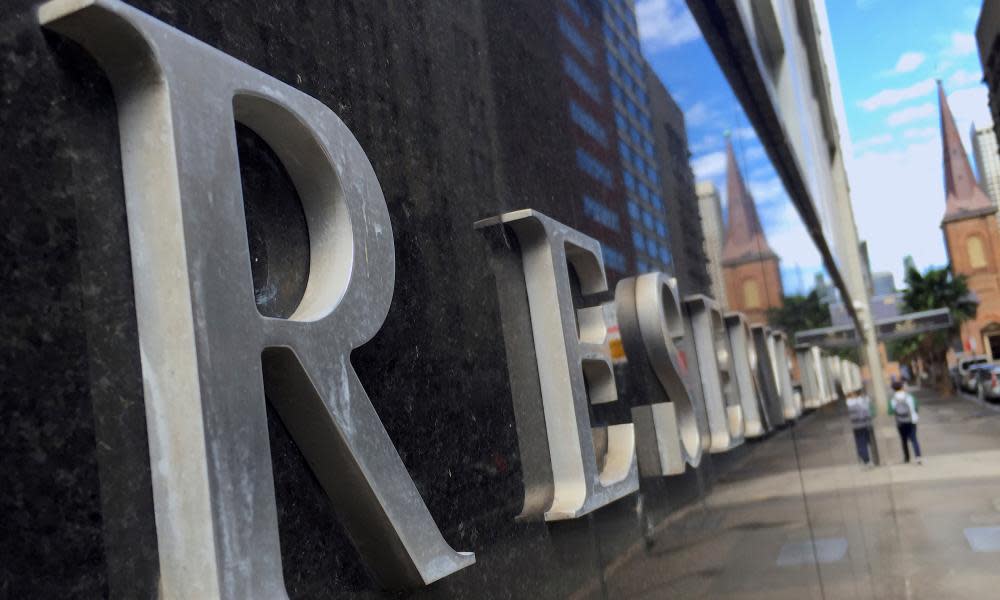Australia's interest rate will stay low for years – Reserve Bank governor

The Reserve Bank governor has confirmed that Australia’s official interest rate will remain near historical lows for years, with inflation unlikely to hit 2% until the end of 2019 at least.
Dr Philip Lowe said RBA officials were still trying to figure out what the new “normal” level of interest rates might be, because wages growth and inflation were not behaving as they have in the past.
He said the bank was flummoxed by the behaviour of wages, given that the unemployment rate had been falling steadily, and GDP growth was expected to pick up to average roughly 3% over 2018 and 2019, but wages remained stagnant and were showing few signs of lifting noticeably.
But he said he was generally happy with the shape of the economy and, if current conditions persisted, then the next likely interest rate move would be up.
Speaking at the Australian Business Economists’ annual dinner in Sydney on Tuesday, Lowe said it was time for a “new narrative” for Australia’s economy because the mining investment boom had all but wound down, and the labour markets in Queensland and Western Australia had shown significant signs of improvement.
He said Australia’s unemployment rate, at 5.4%, was still heading towards 5%, which the RBA considered to be “full employment”.
The improvement in business conditions had led to the strong employment, he said, with the number of people with jobs increasing by about 3% over the past year, “the fastest rate of increase for some time”. This had led to a pick-up in labour force participation, especially for women.
But Lowe expressed frustration at the pace of wages growth and inflation, saying the RBA had spent considerable time over the past 12 months trying to figure out when the improvements in the labour market would translate into a pick-up in wages, which hadn’t happened yet.
“A distinguishing feature of Australia’s recent economic performance has been the slow growth in wages,” he said.
“The wage price index has increased by just 2% over the past year. Whereas in earlier years, Australians had got used to average wage increases of around the 3.5–4% mark, 2–2.5% is now the norm.
“Growth in average hourly earnings has been weaker still: in trend terms it is running at the lowest rate since at least the 1960s.”
He said other advanced economies were experiencing a similar phenomenon with low wages growth so Australia was not alone, but he found the phenomenon perplexing.
He said the business environment had improved, leading to a gentle upswing in investment, and more firms were now prepared to take a risk and invest in new assets.
The improvement in business conditions had not led to growth in consumer spending, and this was weighing on the economy.
“The most likely explanation for the ongoing subdued consumption outcomes is the combination of weak growth in real household income and the high level of household debt,” he said. “The growth in household debt has been outpacing the very low growth in household incomes for a few years now.”
Lowe said many workers still felt as though they had less bargaining power than they once did, owing to increased competition from workers overseas and advances in technology, and many businesses were still focused on cutting costs, so that was contributing to stagnant wages.
But he was hopeful that a tighter labour market should still push up wages and prices, “even if it takes a little longer than we are used to”.
“We are starting to see some hints of this,” he said.
Lowe said the RBA had been watching the buildup of household debt but the risks had so far been contained. The low level of interest rates meant that even though debt levels were higher, the share of household income devoted to paying mortgage interest was lower than it had been for some time.
“Perhaps reflecting this, as well as the recent decline in the unemployment rate, aggregate indicators of household financial stress remain quite low,” he said.
Putting all this together, Lowe said underlying inflation was expected to pick up “only gradually” and remain below average “for some time yet”, so interest rates were unlikely to rise significantly for a number of years.

 Yahoo News
Yahoo News 
